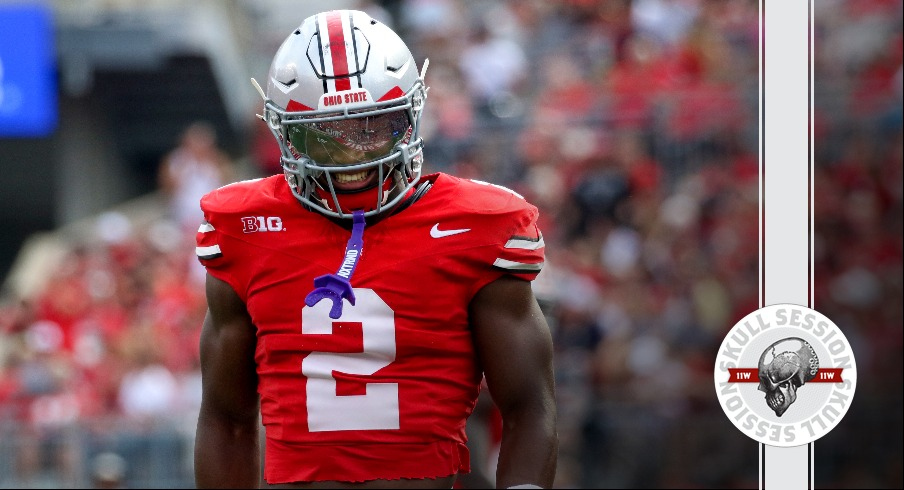The Tour de France saw its second-fastest stage in history on Sunday, with the peloton averaging 50.013kph over the 174km route.
The sprint stage from Chinon to Châteauroux was animated by an incredible move from Alpecin-Deceuninck. Mathieu van der Poel attacked from the flag drop, having already had an amazing Tour de France, winning one stage, finishing second on another and wearing the yellow jersey for two days.
The Dutchman rode 173km of the stage off the front in a two-man break with teammate Jonas Rickaert, before he was caught by the bunch sprint within the last 700m. Tim Merlier won the sprint, his second victory at this year’s race, with Van der Poel finishing 68th.
Why was the race so fast?

There are myriad factors that can aid a high average speed during races, and yesterday’s route played a big role.
Stage 9 had only 1,400m of elevation, so there were few hills to slow the peloton down.
The riders were also helped by a westerly cross-tailwind. Tailwinds on flat stages often lead to high speeds. Stage 7 of the 2020 Giro d’Italia was the fastest ever of the Italian Grand Tour, with the 51.234kph average speed aided by crosswinds.
Stage 17 of the 2019 Vuelta a España also saw crosswinds and holds the record for being the fastest ever officially recorded for a professional race over 200km. Philippe Gilbert won the 219.6km stage, averaging 50.63kph.
“I had a 54×11 [gear] and I was spinning,” Gilbert said after the race.

Yet other factors also play into higher speeds. The Tour de France is faster than ever, with the race steadily speeding up. Tadej Pogačar won the 2024 Tour de France after riding the 3,498km at an average of 41.8kph.
Professional teams are beginning to use artificial intelligence to optimise rider performance and recovery. Pogačar’s UAE Team Emirates-XRG team has an AI bot reportedly called Ana that can analyse data to recommend recovery protocols, training plans and even tyre recommendations.
Lotto-Dstny used AI to assess rider performance at last year’s Tour de France, too. Using Imec’s AI dashboard, the team could see Victor Campenaerts (now with Visma–Lease a Bike) was struggling with stress and fatigue. The team instructed Campenaerts to ease off and then, a few days later, he won stage 18.
Part of the increase in speed is due to an evolution in nutrition. Previously, it was thought you could consume a limit of roughly 60g of carbohydrates via glucose before causing gut distress.
But nutrition expert Asker Jeukendrup discovered this could theoretically rise to 90g by adding fructose, which is transported across the intestine by a different channel. Now, through continual grazing, riders are consuming closer to 120g per hour, helping them better fuel their muscles through a race.
This could be why Van der Poel and Rickaert could stay off the front of the race for so long, without the additional help of sheltering out of the wind in the peloton to preserve energy.
Another reason, however, could be the advances in aerodynamics. “Cycling has become an arms race. The bikes, the wheels, the clothing… If you’re not dialled in, you’ll be left behind,” Team Jayco-AlUla’s Luke Durbridge told BikeRadar last year.
Van der Poel and Rickaert rode the Canyon Aeroad on stage 9, which the German brand claimed to be the “fastest bike in the pro peloton” when it launched last year.
Jonas Rickaert’s power data

Rickaert was awarded the day’s combativity award, with Van der Poel saying after the stage that “his dream is to be on the Tour de France podium, so I’m happy to help him”.
The 31-year-old Belgian also uploaded his ride to Strava, providing an insight into the power data behind his desired podium spot.
With the caption “What a day. What a ride”, Rickaert’s Strava post reveals he had an average power of 356 watts and a weighted average power of 389 watts.
He spent 34 per cent of the stage riding in his threshold zone of 401 to 467 watts and had an average heart rate of 156bpm, according to Strava.
So when was the fastest-ever Tour de France stage?

The recent developments in nutrition and aerodynamics don’t explain why the fastest-ever Tour de France stage happened 25 years ago, when nutrition was comparatively rudimentary and the bikes had none of the modern aero advantages.
Stage 4 of the 1999 Tour de France, from Laval to Bois, saw the peloton average 50.36kph over 194.5km. The stage was won by Mario Cippolini, with Lance Armstrong winning the general classification that year.
The 1999 edition of the Tour de France was later marred by the prevalence of EPO doping. Armstrong was stripped of his win and cycling’s dark history has cast a shadow over any results and statistics from the race.
More from the Tour de France
Source link

